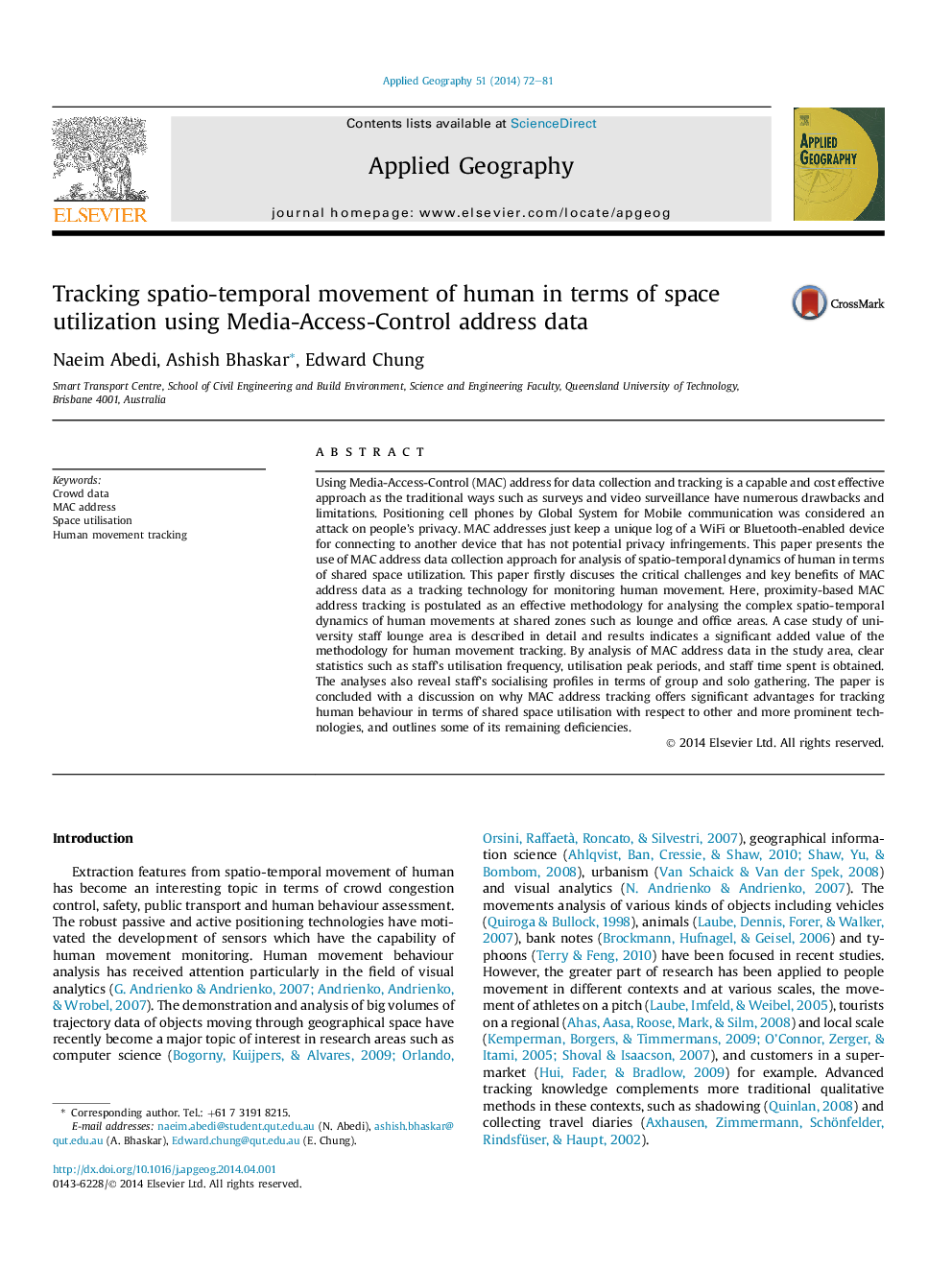| Article ID | Journal | Published Year | Pages | File Type |
|---|---|---|---|---|
| 83348 | Applied Geography | 2014 | 10 Pages |
•We monitor human visit frequency and time spending in shared areas based on Media-Access-Control data.•Determining daily peak hours of utilisation.•Estimation of human time spending.•Evaluation of group and individual attendance and time spending.
Using Media-Access-Control (MAC) address for data collection and tracking is a capable and cost effective approach as the traditional ways such as surveys and video surveillance have numerous drawbacks and limitations. Positioning cell phones by Global System for Mobile communication was considered an attack on people's privacy. MAC addresses just keep a unique log of a WiFi or Bluetooth-enabled device for connecting to another device that has not potential privacy infringements. This paper presents the use of MAC address data collection approach for analysis of spatio-temporal dynamics of human in terms of shared space utilization. This paper firstly discuses the critical challenges and key benefits of MAC address data as a tracking technology for monitoring human movement. Here, proximity-based MAC address tracking is postulated as an effective methodology for analysing the complex spatio-temporal dynamics of human movements at shared zones such as lounge and office areas. A case study of university staff lounge area is described in detail and results indicates a significant added value of the methodology for human movement tracking. By analysis of MAC address data in the study area, clear statistics such as staff's utilisation frequency, utilisation peak periods, and staff time spent is obtained. The analyses also reveal staff's socialising profiles in terms of group and solo gathering. The paper is concluded with a discussion on why MAC address tracking offers significant advantages for tracking human behaviour in terms of shared space utilisation with respect to other and more prominent technologies, and outlines some of its remaining deficiencies.
